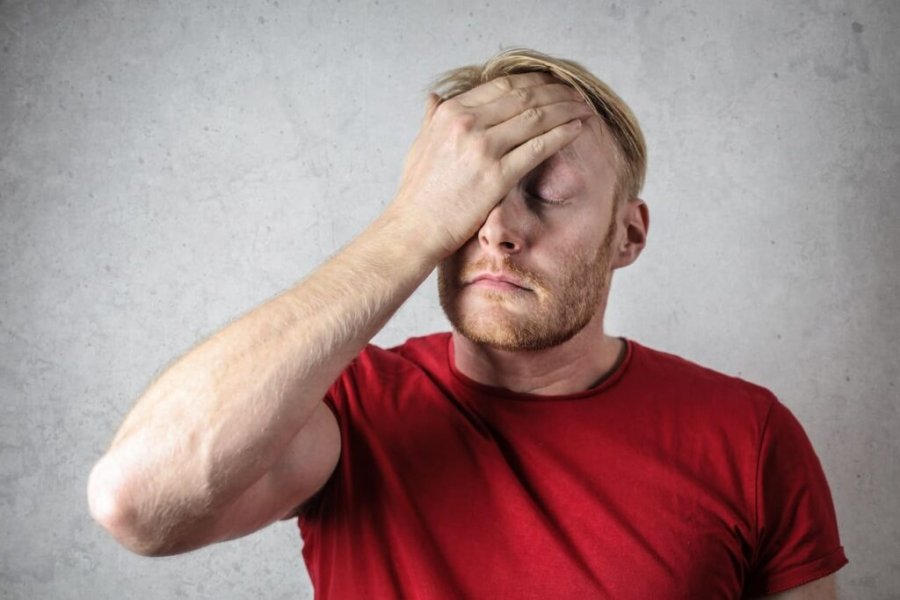
Do you want to learn about what medical cannabis can do for headaches?
Headaches affect everyone and it can be a pain if the occurrences become frequent. Standard, over-the-counter medications, like ibuprofen and acetaminophen, that promise immediate relief aren’t always a surefire solution. And if there’s an extensive history of chronic headaches, the sufferer may be left with few options.
Researchers have found that using cannabis to treat headaches and migraines can be the right solution for some. The state of Hawaii regulates medical marijuana for many kinds of conditions, including chronic headaches. When all else fails, using medical marijuana may be the answer.
Headaches are extremely common and can highly interfere with one’s day-to-day activities. In the U.S alone, up to 80% of adults suffer from the occasional tension headache, which is the most common type of headache. Moreover, 3% of the American population deals with daily, chronic tension headaches.
In the following explanations below, we provide an overview of headaches and the kinds many people suffer from. Furthermore, we review how medical marijuana can alleviate this condition. We also go over the risks that may be present when using medical marijuana.
What Causes Headaches?
Headaches are extremely common and can result from a variety of cases. It could be a symptom indicating a disorder or condition, such as anxiety or depression. Headaches may occur from experiencing stress or high blood pressure. Lack of sleep, dehydration or being in front of a screen for too long can also cause headaches.
When someone experiences a headache, many additional effects can come from it. These include:
- Nausea
- Dizziness
- Sensitivity to light and smells
- Blurred vision
- Vertigo

Sometimes, headaches arise randomly and cannot be easily linked to a certain cause. They could also occur to signal a more serious condition that cannot be identified right away.
Types of Headaches
Several types of headaches can affect someone greatly. They are labeled based on the frequency of occurrence, the cause and the type of pain involved. Some are more common than others, but all result in pain and discomfort.
Tension Headaches
This is the most common type of headache globally. According to the WHO, in developed countries, such as the U.S., tension headaches affect a third of men and half of women. Women experience this type of headaches more often than men as a result of fluctuating levels of the estrogen hormone. Tension headaches invoke a dull pain on either side of the head, as well as, in certain cases, some pressure behind the eyes and tenderness around the neck.
Migraines
Migraines are slightly less common than the typical headache, but still, affect millions around the world. It is the 3rd most prevalent illness globally. Migraines tend to run in familial generations, meaning migraine sufferers usually have a family history of the condition.
Migraines will cause throbbing pain on one side of the head, accompanied by nausea and dizziness. Less commonly, before experiencing a migraine, some people will see black spots or flickering colors. They may also feel muscle numbness or weakness.
Cluster Headaches
Cluster headaches are quite rare, but those who experience them understand their severity and frequency. In the case of other kinds of headaches, it’s usually women who are more likely to endure them. However, cluster headaches are six times more likely to affect men than women.

Cluster headaches tend to awaken the sufferer at night in painful, sudden attacks around one eye or one side of the head. Attacks can last from 15 minutes to three hours. Other symptoms of cluster headaches include tearing, redness or swelling of the affected eye, and pale skin or flushing of the face.
Exertional Headaches
This kind of headache occurs after strenuous and fast-paced activity. Running, weightlifting and other forms of exercise could lead to painful bouts of pain throughout the head. Having a family history of migraines makes one more at risk of experiencing exertional headaches.
Hypnic Headaches
A rare condition, this headache is unique in the fact that it only develops during sleep and its attacks wake up the sufferer. Its time appearance has made it known as the “alarm clock” headache. Hypnic headaches usually last from 15 minutes to four hours after awakening the sufferer.
Hypnic headaches could be a sign of a sleep-related condition, such as sleep apnea or other nocturnal disorders. Those over the age of 50 are more likely to experience hypnic headaches. This headache may be confused with migraines and cluster headaches.
Sinus Headaches
Sinus headaches stem from allergies or viral infections when there’s a buildup of pressure in the sinuses. This can be because of a cold, flu or other sicknesses of the moment. This headache can cause pain around the head, cheekbones and between the eyes, in addition to a runny nose and/or fever.
Medication overuse headaches
When abusing medication to alleviate the effects of headaches or other types of pain, you can experience this kind of headache, once known as the “rebound” headache.

Narcotics and barbiturates carry the biggest likelihood of succumbing to this headache. It’s also likely to result from overusing certain over-the-counter medications.
Medical Marijuana & Headaches
Researchers are not overly aware of the benefits that come from using medical marijuana as a treatment for headaches and migraines. This is due to the governmental limitations on studies related to testing marijuana. Based on the results of recent studies, the effects of migraines, the most studied form of headaches, show to be greatly decreased when marijuana is used as treatment.
At the University of Colorado, participants underwent a study in 2016 during which they consumed cannabis to see how it would affect their regular migraines. The results revealed that the number of monthly headaches decreased from 10.4 to 4.6 when using marijuana daily. It was also noted that inhaling or smoking marijuana was effective while using edibles was not.
Researchers have theorized that these benefits could be related to inflammation of the brain that occurs during headaches. THC and CBD, which are found in cannabis, are anti-inflammatory compounds within the plant. These also have additional effects that come into play when marijuana is taken. The alleviation of headaches may also be related to the natural compound cannabinoids, which affect pain receptors, therefore preventing them from feeling pain normally.
The Risks of Using Medical Marijuana for Headaches
Marijuana contains both THC and CBD. These primary components of the cannabis product each affect the body differently. THC is what gives the user a “high” and is sought after by recreational users. CBD is known for its widespread use in the medical world as it doesn’t provide the feeling of intoxication and shows to relieve pain.

It’s important to ask your physician if using medical marijuana to treat your headaches is the right choice for you. Some risks related to cannabis may exacerbate your experience or a separate, underlying condition. Here are some side-effects of medical marijuana:
- Dizziness, disorientation, and hallucinations
- Dry mouth
- Increased heartbeat
- Sudden changes in mood
- Urinary retention
- Concentration issues and attention shifts
- Drops in blood pressure
In a Nutshell: Medical Marijuana for Headaches
Medical marijuana may just be the thing to transform your life and alleviate your chronic headaches. While the treatment has few studies behind it, the evidence currently available presents a strong argument supporting the use of cannabis for headaches. If all other alternatives have given you lost hope, consult with your doctor and decide if medical marijuana is an option for you.